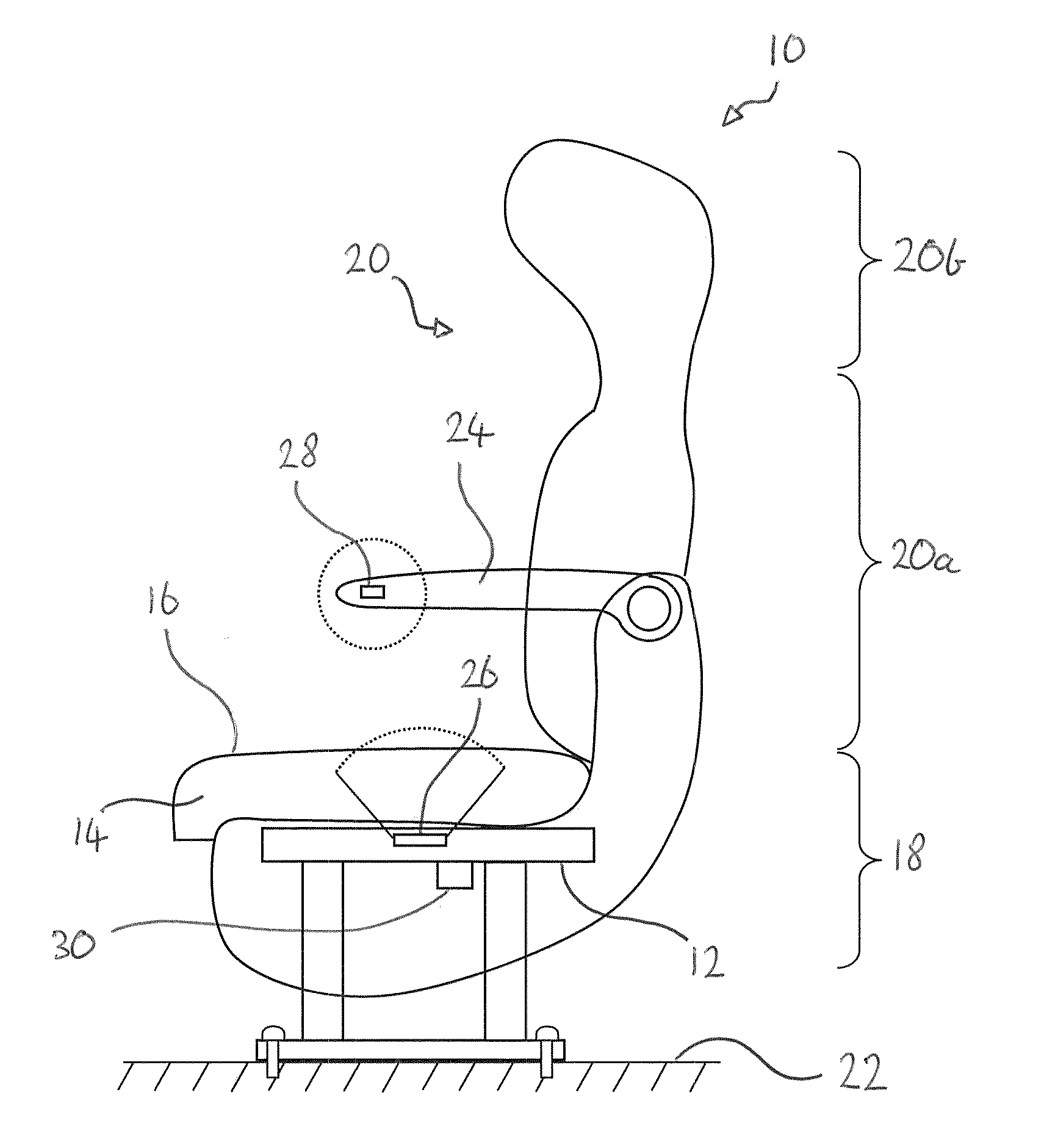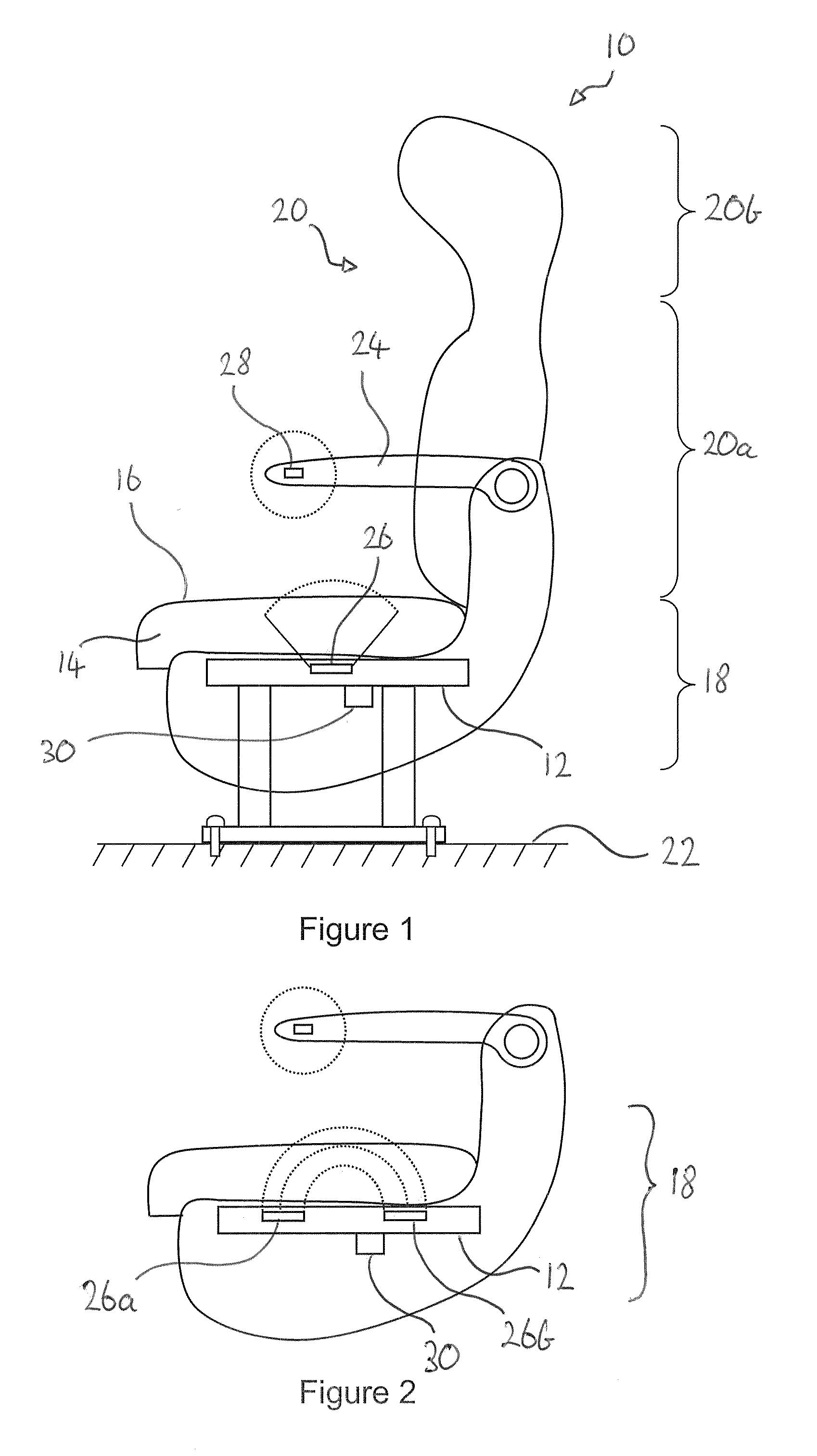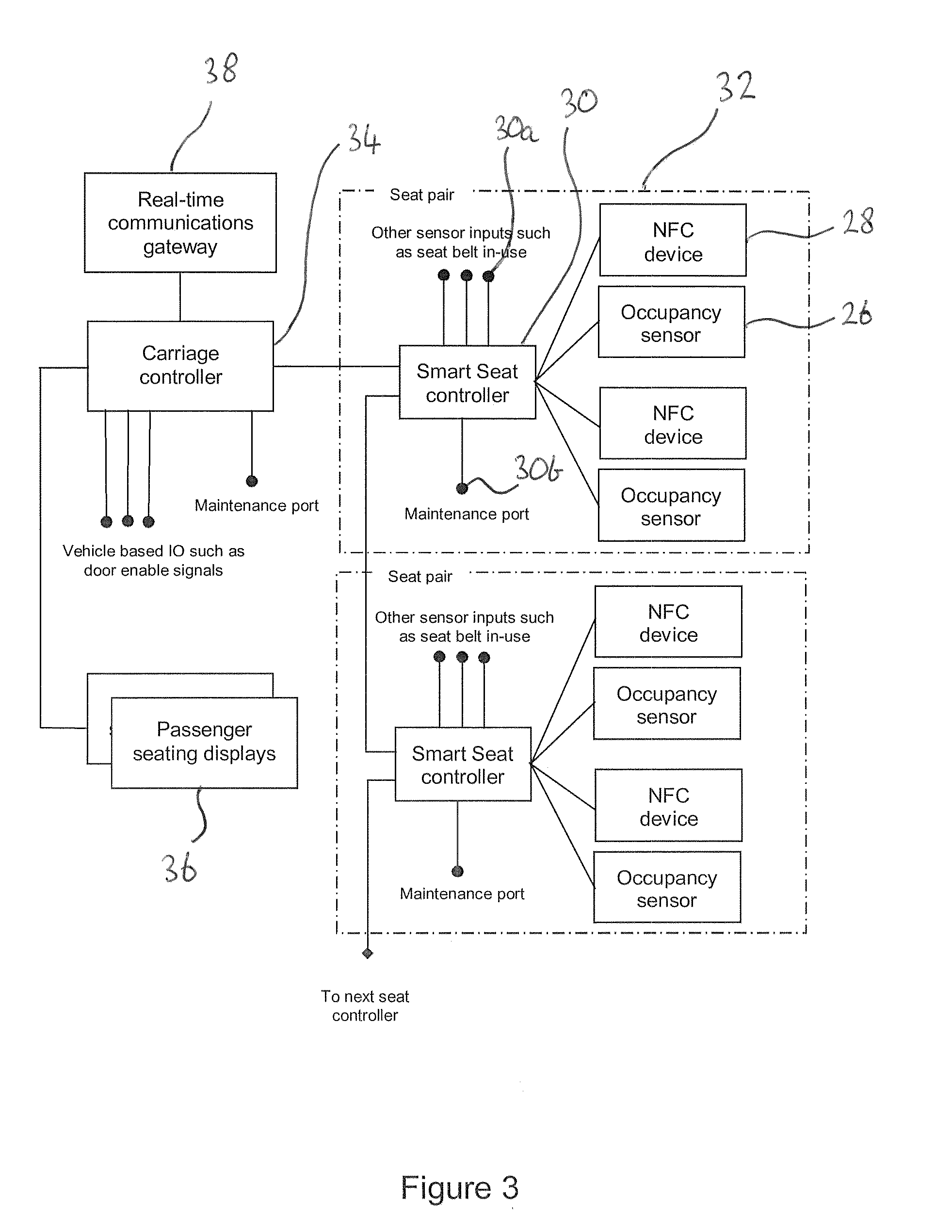Passenger occupancy identification system
a passenger occupancy and identification system technology, applied in the direction of pedestrian/occupant safety arrangement, using reradiation, instruments, etc., can solve the problems of laborious manual ticket check, inability to provide accurate indication, and inability to accurately identify passengers on any particular route or train. , to achieve the effect of efficient use of all seats
- Summary
- Abstract
- Description
- Claims
- Application Information
AI Technical Summary
Benefits of technology
Problems solved by technology
Method used
Image
Examples
Embodiment Construction
[0046]The invention derives from the general premise that passenger vehicle occupancy can be better determined at seat level, instead of, or in addition to, monitoring footfall at vehicle stations or the like. The present invention thus provides a robust and accurate way of determining valid seat occupancy and monitoring the same at a vehicle or wider-system level.
[0047]Turning firstly to FIG. 1, there is provided a seat 10 according to one example of the present invention. The seat comprises a rigid seat frame or support 12 and conventional upholstery 14, which may comprise padding, springs and / or webbing over the support 12. A seat cover of leather or textile material is provided as an outer protective layer 16 over the seat 10.
[0048]The seat 10 comprises a seat base 18 for supporting the majority of the weight of an occupant and a seat back portion 20. The seat base 18 is supported above a floor 22 or other support structure by one or more support members 20. The seat base is gen...
PUM
 Login to View More
Login to View More Abstract
Description
Claims
Application Information
 Login to View More
Login to View More - R&D
- Intellectual Property
- Life Sciences
- Materials
- Tech Scout
- Unparalleled Data Quality
- Higher Quality Content
- 60% Fewer Hallucinations
Browse by: Latest US Patents, China's latest patents, Technical Efficacy Thesaurus, Application Domain, Technology Topic, Popular Technical Reports.
© 2025 PatSnap. All rights reserved.Legal|Privacy policy|Modern Slavery Act Transparency Statement|Sitemap|About US| Contact US: help@patsnap.com



